If you were anything like me when I first started working out in the gym,
I felt quite intimidated.

You'd see these imposing gym enthusiasts effortlessly lifting heavy weights, their muscles bulging.
Their clothes were drenched in sweat;
some even had chains hanging around their necks.
Was it for some practical purpose or it was it just to intimidate others?
I wasn't ready to find out.

Because of these seasoned gym-goers, I hesitated to go anywhere near the free weights area.
I was afraid they might view me as a weakling and decide to use me as an additional weight for their next set of pull-ups.
I never ventured close to those barbells, dumbbells, and, heaven forbid, the squat racks.

It felt like stepping into a different world—a world of chalk dust, ammonia salts, and muscle-bound enthusiasts who might scoff at my feeble attempts to bench press, which usually involved just the bar without any added weights.
So, for these reasons, I stuck to the safe middle ground of the gym, where the machines were.

It was like hiding in the bushes behind the towering weights on either side of me.
I was always looking over my shoulder to ensure no one noticed how little I was lifting
However I felt secure in my leg press booster seat, strapping myself and exerting maximum effort on light weights
Unfortunately with no progress.

Amongst the sea of weights, I would quietly observe these gym titans.
They rarely ventured into my territory, preferring to stay on the outskirts of the gym.

Most of their workouts revolved around unassisted weights, and I couldn't help but wonder why.
I could comfortably manage 50 pounds on the leg machine, but when I attempted a squat with just the barbell, I struggled to lift it.
How were these seasoned gym-goers able to load up the bar with 3-4 plates on each side and still perform squats with ease?

It was a perplexing question I couldn't answer.
I often wished I were strong enough to work out with the true gym enthusiasts.
So, I diligently stuck to the leg machines, hoping to sculpt bigger legs like those I saw on the muscular individuals near the unassisted machines.
However, my efforts seemed futile.

I failed to see the same kind of progress that these formidable figures achieved with the unassisted machines.
It wasn't until I committed myself to a workout plan that required me to use barbells, dumbbells, and even the dreaded squat rack that I realized its profound impact on my physique.
The machines simply didn't engage my entire body like a barbell bench press or squat did.
When I utilized the squat rack, it felt like my entire body was ignited.

That's when I understood that a truly effective workout engaged multiple moving parts simultaneously.
I came to realize that these movements were called compound lifts.
Compound lifts forever changed my workouts and my physique.
What is a Compound Lift?

A compound lift in the gym is essentially a powerhouse exercise that engages multiple muscle groups simultaneously.
Think of it as achieving multiple fitness goals with a single move.
Instead of tackling various exercises to isolate individual muscles, compound lifts efficiently target numerous muscle groups in a single go.
In simpler terms, a compound lift is a smart and efficient exercise that delivers substantial benefits by working on multiple parts of your body at once, helping you become stronger and fitter more effectively.
What makes compound lifts so effective for strength training?
Compound lifts are highly effective for strength training for several important reasons:
Involvement of Multiple Muscle Groups:

Compound lifts engage multiple muscle groups simultaneously.
This means that you can target several muscles with a single exercise, promoting more comprehensive muscle development.
Efficiency:

Compound lifts offer a more efficient way to work out.
You can save time at the gym since they work on multiple muscle groups simultaneously.
This contrasts with isolation exercises that target only one muscle at a time, requiring you to do more exercises to cover all muscle groups.
Functional Strength:

Many compound lifts mimic everyday movements, like picking up heavy objects or getting up from a chair.
This practical aspect of strength training can make your body more capable in real-life scenarios.
Hormonal Response:

Compound lifts, mainly when performed with heavy weights, stimulate the release of hormones such as testosterone and growth hormone.
These hormones play a vital role in muscle growth and overall strength development.
Core Engagement:

Your core muscles must work hard to maintain stability during compound lifts.
This strengthens your core and provides essential support for your spine, particularly during heavy lifting.
Progression:

Compound lifts offer a natural progression path.
As you get stronger, you can increase the weight you lift, leading to ongoing strength development.
This concept of "progressive overload" is fundamental for building strength.
Calorie Burn:

Due to the involvement of numerous muscle groups and higher energy expenditure, compound lifts can help you burn more calories during your workouts.
This can be beneficial for weight management and fat loss.
By incorporating compound lifts into your workout routine, you can experience substantial gains in strength and overall fitness.
What are the Best Compound Lifts?
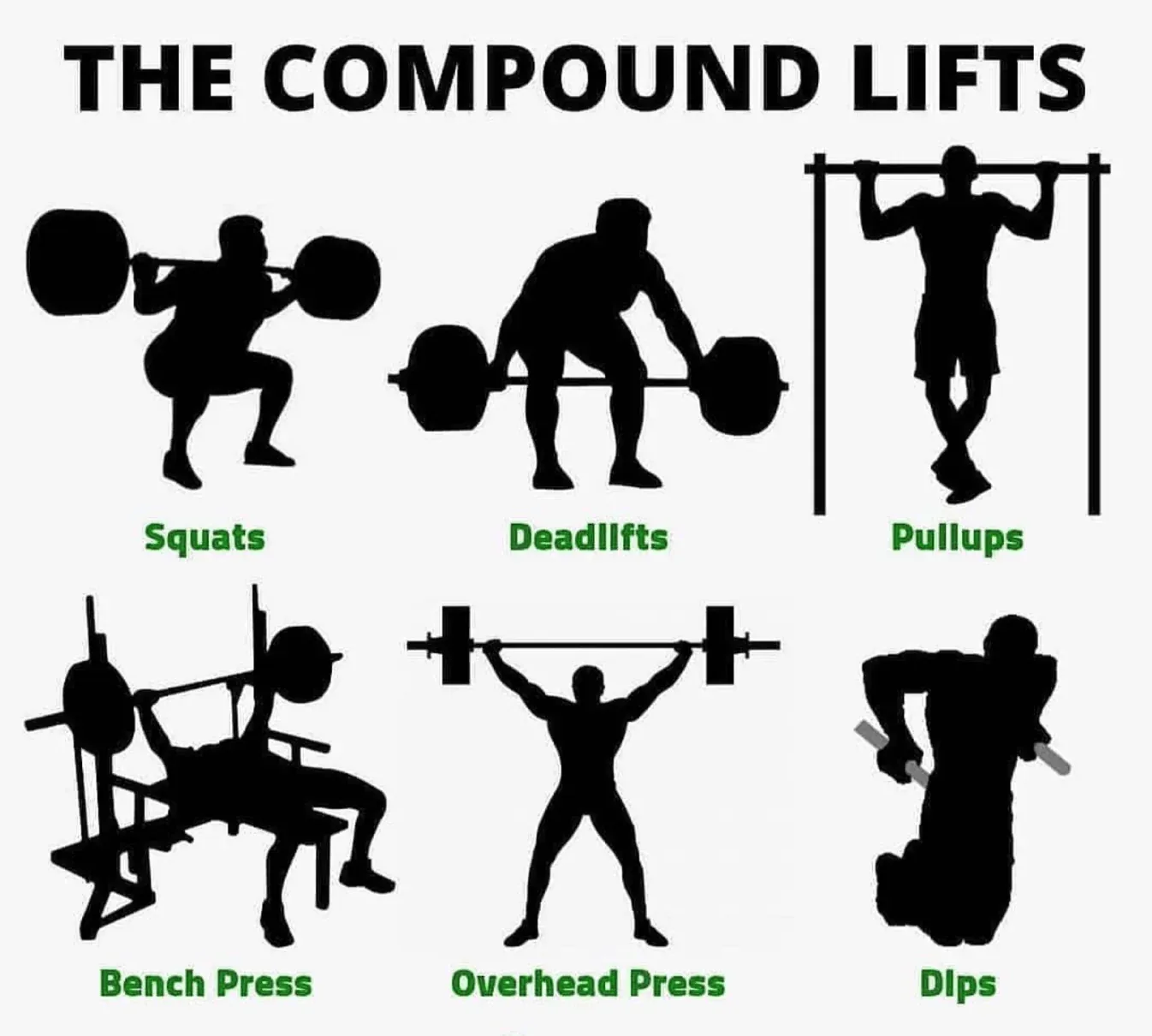
Compound lifts are essential exercises for building strength and engaging multiple muscle groups. Here are some common examples:
Bench Press:
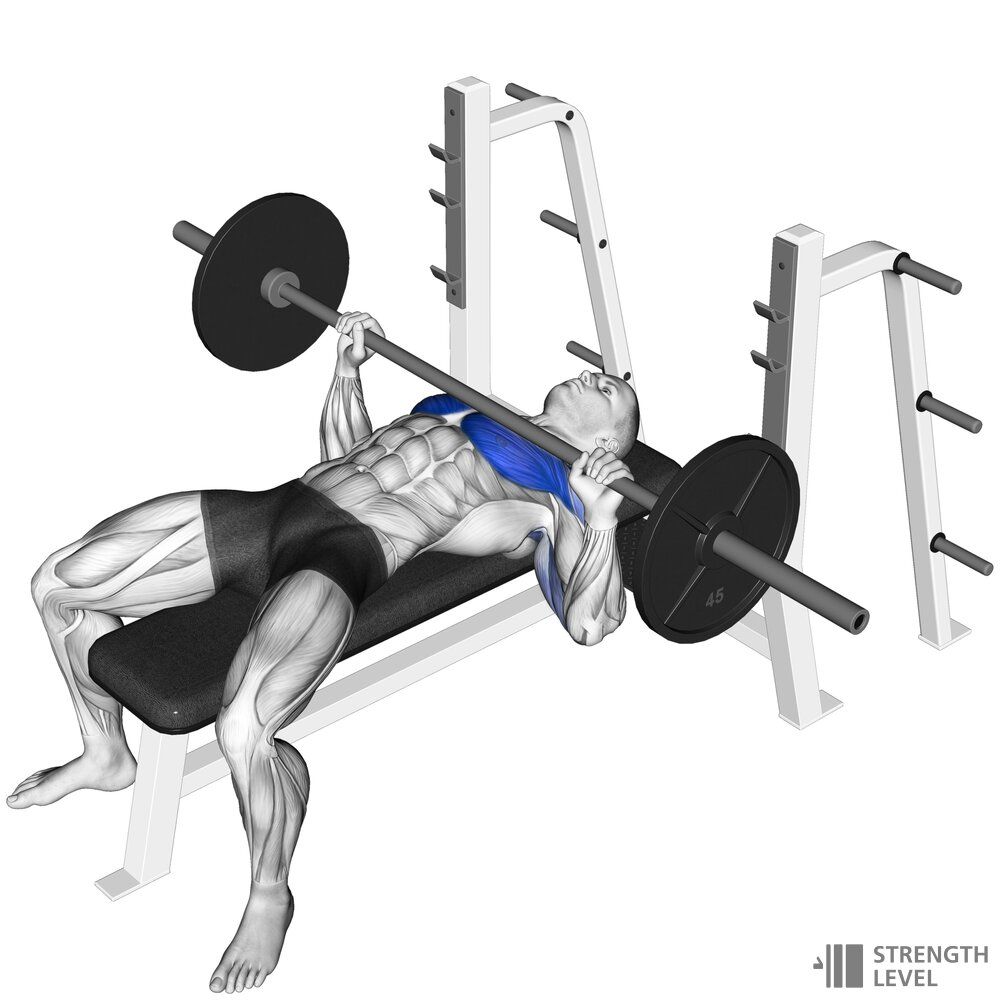
The bench press primarily targets your chest muscles but also engages your shoulders and triceps.
Your core muscles are used for stability.
Deadlift:
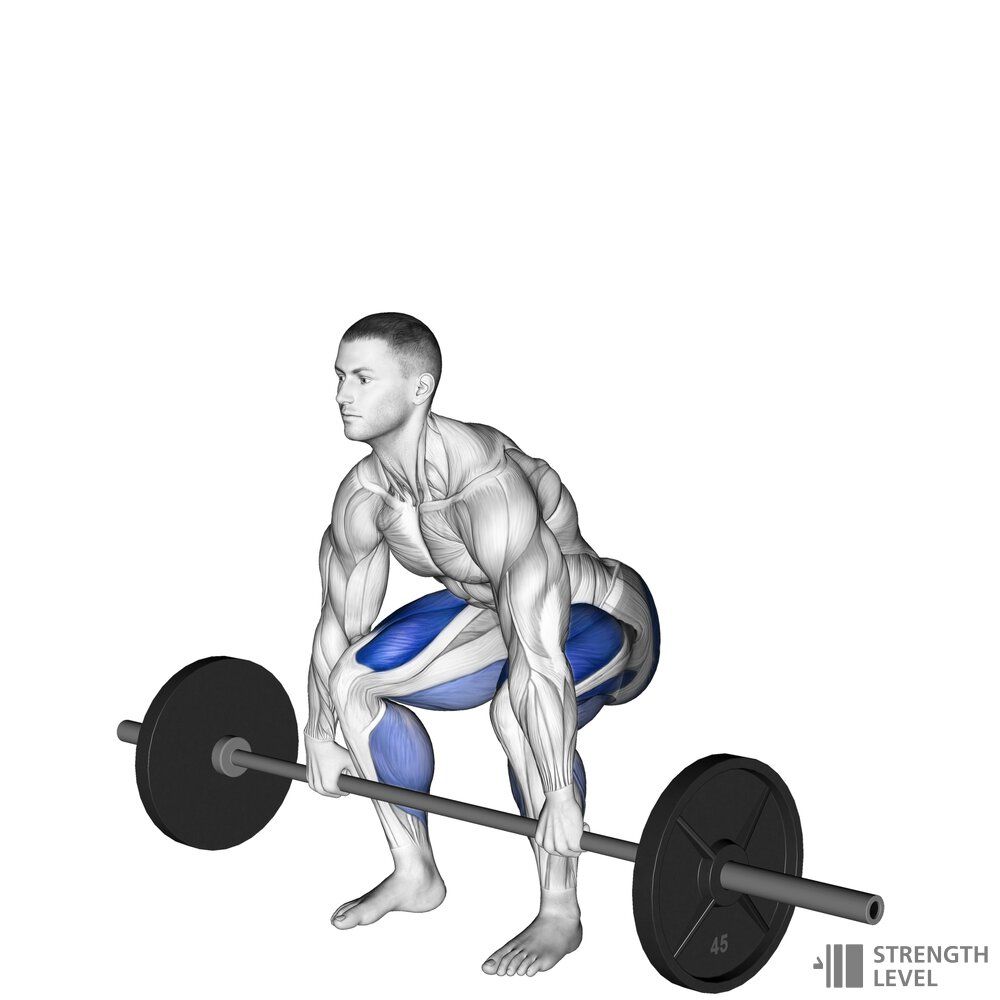
Deadlifts work on your lower back, glutes, hamstrings, and grip strength.
They also activate your upper back and lats.
Overhead Shoulder Press:
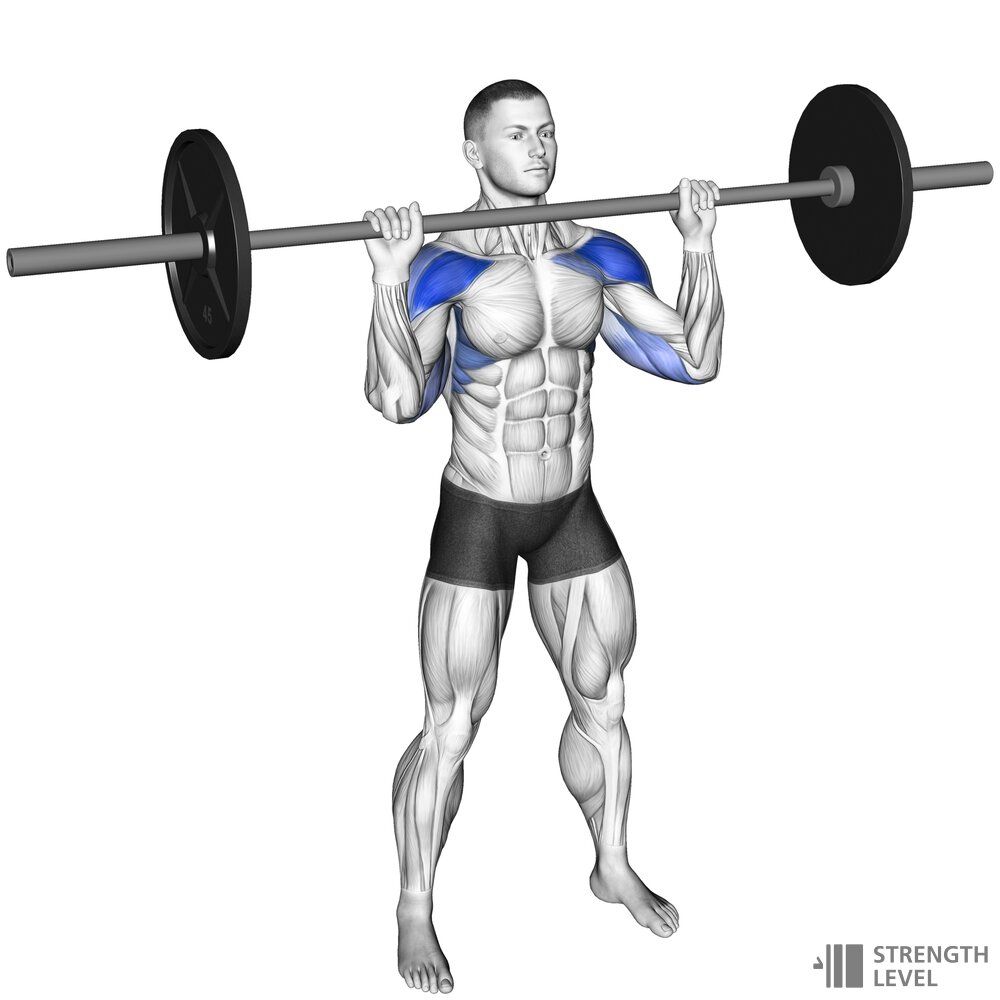
This exercise focuses on your shoulder muscles but also involves your triceps and upper chest for stability.
Pull-Ups/Chin-Ups:
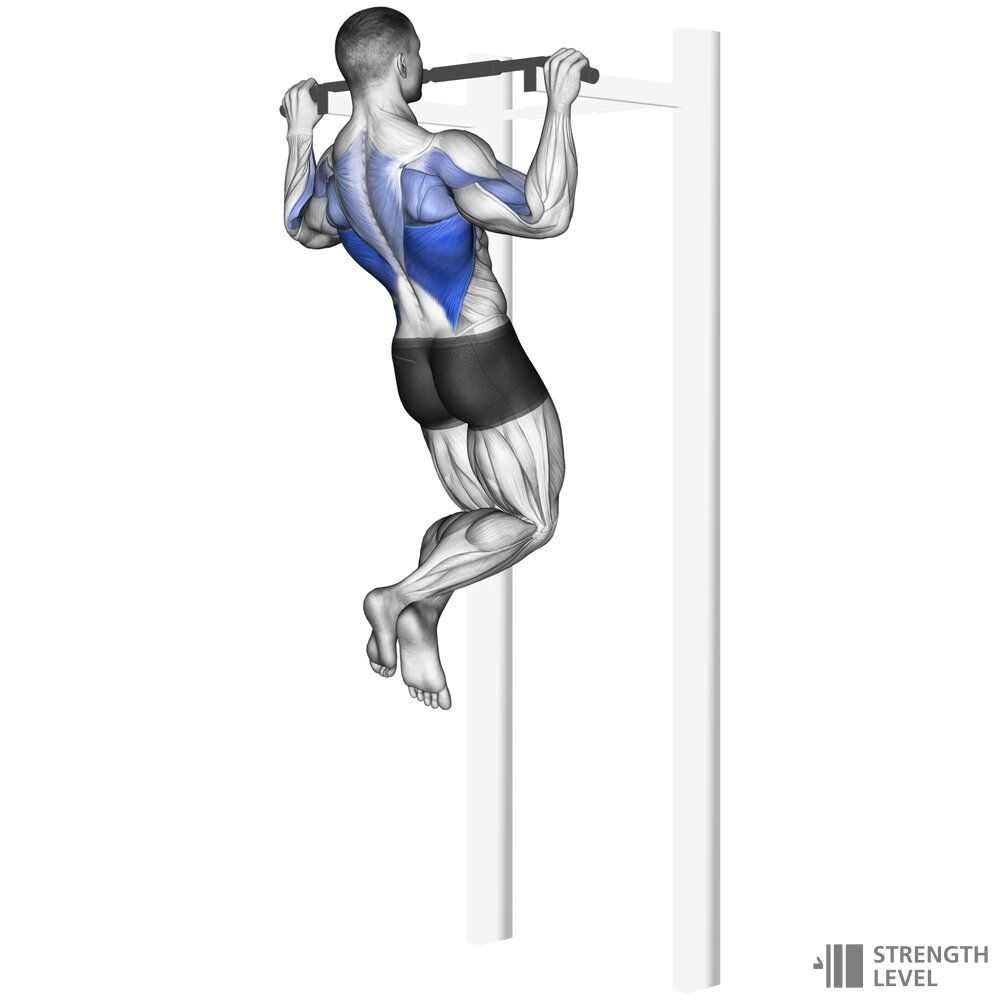
Pull-ups and chin-ups primarily work your back muscles (lats), biceps, and forearms.
They also engage your shoulders and core as you stabilize your body while pulling yourself up.
Squat:
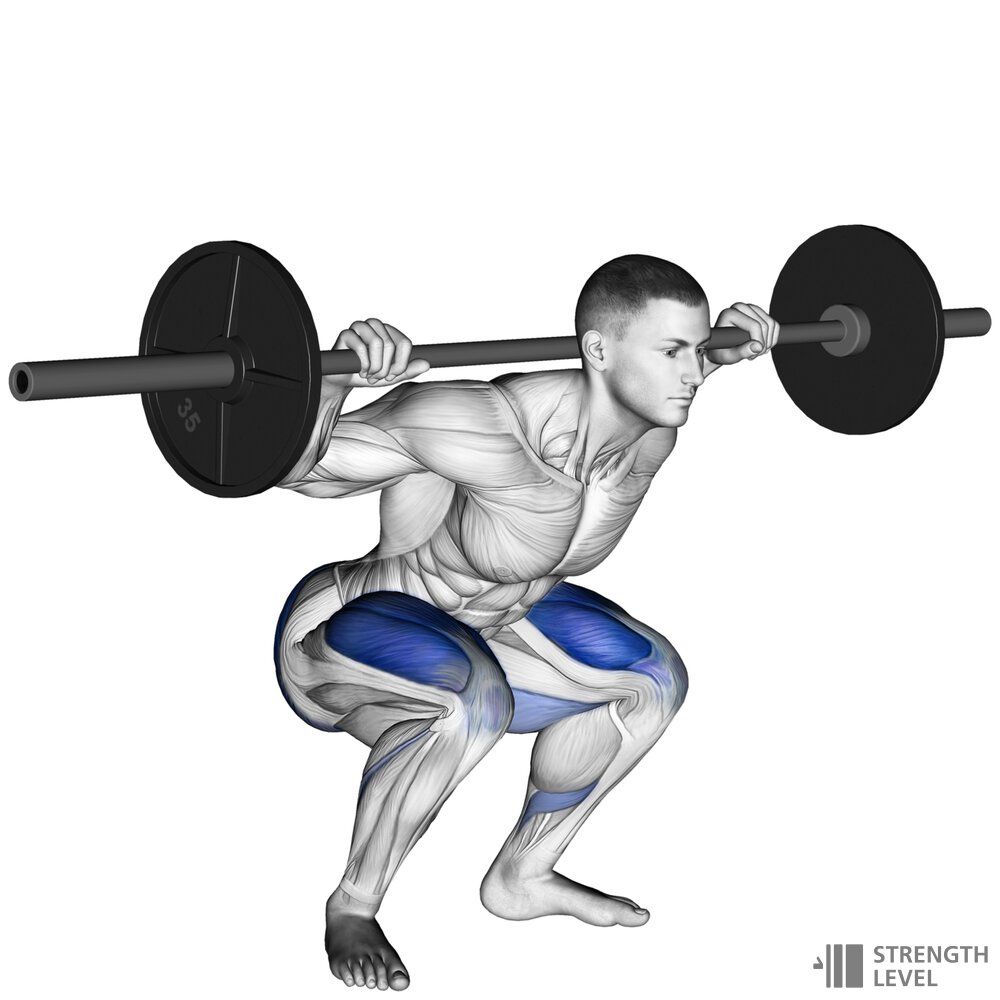
Squats are excellent for developing your leg muscles, including the quadriceps, hamstrings, and calves.
They also activate your lower back, core, and upper back for balance and support.
How do these Compound Lifts Mimic Real-Life Movements?
Common compound lifts like squats, deadlifts, bench presses, overhead presses, and pull-ups mimic real-life movements and provide valuable functional strength.
Here's how they replicate everyday actions:
Bench Press and Overhead Press - Emulating Pushing Movements:

Both bench and overhead presses replicate pushing movements.
Bench presses mimic pushing objects horizontally, like opening a heavy door or pushing a stalled car.
Overhead presses mimic lifting items overhead, such as placing items on high shelves.
Strengthening your chest, shoulders, and triceps through these exercises can improve your ability to perform these pushing actions.
Deadlift - Simulating Lifting Heavy Objects:

The deadlift mirrors the action of lifting heavy objects from the ground.
This could be as simple as picking up your groceries or as intese as lifting a couch.
By training your lower back, glutes, and hamstrings with deadlifts, you develop the strength required for safely and effectively performing these lifting tasks in your daily life.
Core Engagement - Enhancing Stability and Balance:

Compound lifts often necessitate core engagement to maintain stability and balance during the exercises.
A strong core is vital for maintaining proper posture, preventing back pain, and enhancing overall body stability.
This, in turn, makes everyday activities safer and more comfortable.
Pull-Ups/Chin-Ups - Imitating Pulling Motions:

Pull-ups and chin-ups emulate pulling motions, such as pulling yourself up over a ledge or bringing a heavy object closer to you.
These exercises target your back and biceps, enhancing your upper body pulling strength, which can benefit various tasks and activities.
Squat - Replicating Sitting and Standing:

Squats simulate the movements of sitting down and standing up, which we do regularly throughout the day.
By strengthening the muscles involved in squats (quadriceps, hamstrings, and glutes), you enhance your ability to perform these essential activities effortlessly.
This is particularly beneficial for tasks like getting in and out of chairs, picking up objects from the ground, or climbing stairs.
How to Incorporate Compound Lifts into your Workouts
Incorporating compound movements into your fitness routine is an excellent way to build strength and reduce your reliance on machines for workouts.
Here's a quick guide on how to get started:
Assess Your Fitness Level 🔍
Before you begin, evaluate your current fitness level and identify specific goals such as gaining strength, losing weight, or improving endurance.
Knowing your starting point will help you tailor your routine accordingly.
Learn Proper Form 🏋️
It's crucial to learn the correct form to prevent injuries and maximize the benefits of compound movements.
Consider seeking guidance from a fitness professional or reputable online resources to ensure you perform each exercise correctly.
Begin with Light Weights🪶
If you're new to compound movements, start with lighter weights to practice proper form.
Concentrate on perfecting your technique before increasing the weight.
Gradually Increase Weight🪨
As you gain confidence and improve your form, gradually increase the weight you lift.
Aim for a weight that allows you to complete your desired number of repetitions with proper form while still providing a challenge.
Incorporating Compound Lifts 💪
Create a workout plan that incorporates compound exercises.
One practical approach I recommend and follow myself is structuring your entire workout around a primary compound lift.
Allocate 50% of your workout time to focus on your strength goal using the compound lift.
You can add exercises afterward to target specific muscle groups or fatigue, but starting with a compound lift maximizes your strength gains.
Track Your Progress📝
Keep a workout journal to monitor your progress.
Record the weight, sets, and repetitions for each exercise.
This will help you visualize your improvements over time.
Conclusion: My New (Giant) Friends

As I delved deeper into compound movements and ventured towards lifting heavier weights, I eventually had to approach those hulking gym enthusiasts for assistance.
Surprisingly, the bigger these guys were, the more likely they were to be incredibly supportive and willing to help you achieve your personal records in your exercises.

All my apprehensions and fears dissolved when I discovered that these individuals who have mastered the gym environment were once exactly where you are now.
They intimately understand how challenging it can be to lift that bar when they are just starting their fitness journey, sans the added experience and training years.
They embody humility and are always ready to lend a hand.

So, the next time you find yourself at the gym, consider stepping away from the machines and weights you're comfortable with and see what your body can accomplish.
You might be pleasantly surprised by the support and encouragement you receive from those who've walked the same path.
Remember 🚨
Always prioritize safety.
For beginners, consider working out with a friend or asking one of the more experienced gym-goers for a quick spot during your compound movements to ensure safety and proper execution.
Compound movements might appear intimidating initially, but once you get acquainted with them, they become as friendly as your newfound muscular pals at the gym.
Happy Lifting!
For Glory!




